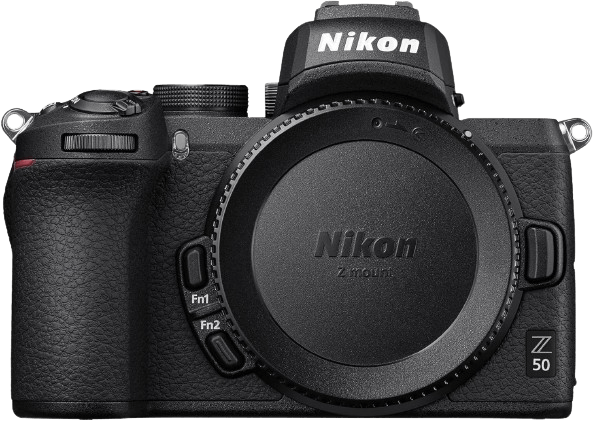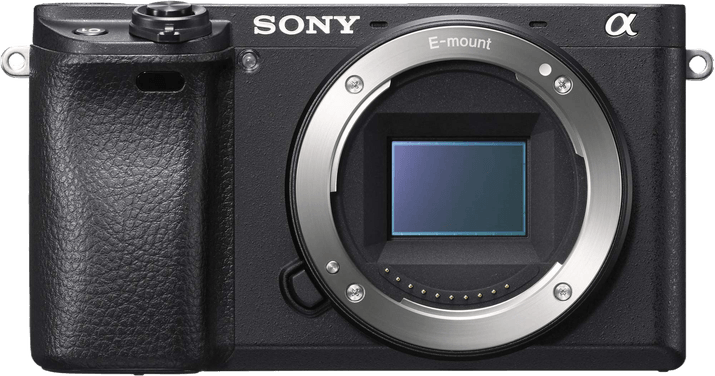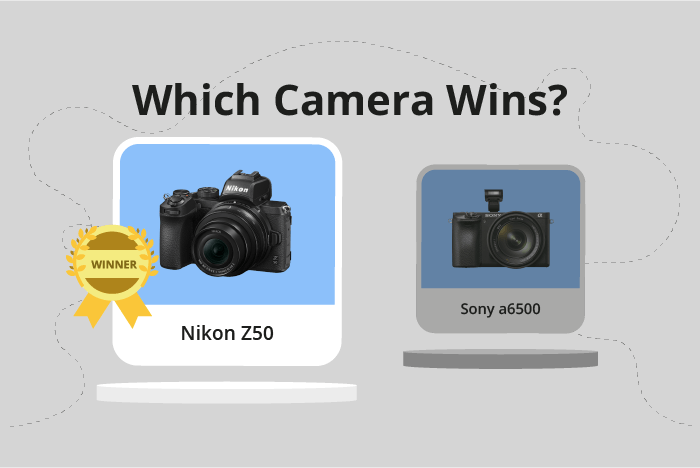Nikon Z50 vs Sony a6500 Comparison
Nikon Z50

Sony a6500

The Nikon Z50 edges out the Sony a6500 with a score of 73/100 compared to Sony’s 72/100. Both cameras are mirrorless and have similar weights, with the Z50 at 450g and the a6500 at 453g. The Nikon Z50, announced in 2019, offers a more affordable launch price of $859 compared to the Sony a6500’s $1400 in 2016.
The Nikon Z50 is better in terms of affordability and slightly lighter weight. However, the Sony a6500 has a more compact size with dimensions of 120 x 67 x 53mm compared to the Z50’s 127 x 94 x 60mm. This makes the a6500 easier to carry around.
Based on these specifications, the Nikon Z50 is a better choice for budget-conscious buyers, while the Sony a6500 may suit those seeking a smaller camera for easy portability.
Nikon Z50 vs Sony a6500 Overview and Optics
The Sony a6500 wins in the optics comparison with a score of 74/100, while the Nikon Z50 scores 72/100. Both cameras share several specifications, including an 11 fps shooting speed, a CMOS sensor, and an APS-C sensor size. However, there are notable differences between the two cameras that contribute to their respective scores.
The Sony a6500 has the edge in terms of megapixels, boasting 24.2 compared to the Nikon Z50’s 21. This difference allows the a6500 to capture more detail in images. Additionally, the a6500 features image stabilization, whereas the Z50 does not. This advantage enables the Sony a6500 to produce sharper images, particularly in low light or when using longer focal lengths.
On the other hand, the Nikon Z50 has a higher DXOMARK sensor score of 97, compared to the Sony a6500’s 85. This score indicates that the Z50’s sensor performs better in terms of dynamic range, color depth, and low light performance. Furthermore, the Z50 utilizes the Nikon Z lens mount, which provides compatibility with a growing range of high-quality lenses.
Despite the Nikon Z50’s superior sensor performance and lens compatibility, the Sony a6500’s higher megapixel count and image stabilization feature give it a slight advantage in the optics comparison. As a result, the Sony a6500 is the winner in this category. However, potential buyers should weigh the importance of each camera’s strengths and weaknesses to determine which best suits their needs and preferences.
Nikon Z50 vs Sony a6500 Video Performance
The Nikon Z50 emerges as the winner in the video capabilities comparison against the Sony a6500, with a video score difference of 14 points (91/100 for the Z50 and 77/100 for the a6500). Both cameras share similar specifications in terms of video features, such as 4K maximum video resolution and 3840 x 2160 maximum video dimensions. Additionally, both cameras have a maximum video frame rate of 120fps.
The Nikon Z50 outperforms the Sony a6500 in certain aspects, most notably with its built-in time-lapse functionality. This feature allows the Z50 to create stunning time-lapse videos without requiring additional equipment or software. This advantage makes the Nikon Z50 a more versatile and convenient choice for videographers who enjoy capturing time-lapse sequences.
On the other hand, the Sony a6500 does not offer any specific video features that surpass the Nikon Z50. It lacks built-in time-lapse functionality, which puts it at a disadvantage compared to the Z50. However, the a6500 still delivers high-quality 4K video and a 120fps frame rate, ensuring that it remains a viable option for video enthusiasts.
After examining the video capabilities of both cameras, it is evident that the Nikon Z50 holds an edge over the Sony a6500. The Z50’s built-in time-lapse functionality sets it apart and makes it a more attractive choice for videographers. While the Sony a6500 does not possess any superior video features, it still maintains a strong video performance with its 4K resolution and 120fps frame rate.
Nikon Z50 vs Sony a6500 Features and Benefits
The Nikon Z50 emerges as the winner with a feature score of 86/100, while the Sony a6500 scores 81/100. Both cameras share several features, such as touchscreen capability, flip screens, GPS, WIFI, and Bluetooth connectivity.
The Nikon Z50 outperforms the Sony a6500 in terms of screen size and resolution. With a 3.2-inch screen and a resolution of 1,040,000 dots, the Z50 offers a larger and clearer display compared to the a6500’s 3-inch screen and 921,600-dot resolution. This advantage allows users to compose and review images with greater ease and accuracy.
On the other hand, the Sony a6500 does not have any significant advantages over the Nikon Z50. Although both cameras score relatively closely, the Z50’s superiority in screen size and resolution contribute to its higher feature score.
Taking these factors into account, the Nikon Z50 proves to be the better camera in terms of features. The larger and higher-resolution screen enhances the overall user experience, making it an ideal choice for those seeking a camera with top-notch features. Meanwhile, the Sony a6500 remains a viable option, but its lower feature score and lack of notable advantages make it less appealing than the Nikon Z50.
Nikon Z50 vs Sony a6500 Storage and Battery
The Nikon Z50 outperforms the Sony a6500 in storage and battery with a score of 35/100 compared to the Sony’s 21/100. Both cameras have one memory card slot and accept SD, SDHC, and SDXC cards. However, the Sony a6500 also accepts Memory Stick Pro Duo cards, providing additional storage versatility.
The Nikon Z50 has a battery life of 320 shots and uses an EN-EL25 battery, which can be charged via USB. On the other hand, the Sony a6500 lasts slightly longer with 350 shots per charge, using an NP-FW50 battery. However, the Sony a6500 lacks USB charging capabilities, making it less convenient for on-the-go charging.
Despite the Sony a6500’s advantage in battery life and storage compatibility, the Nikon Z50’s USB charging feature gives it an edge in overall convenience and practicality. The Nikon Z50 is a better choice for users prioritizing battery and storage convenience, while the Sony a6500 may appeal to those needing slightly longer battery life and additional storage options.
Nikon Z50 vs Sony a6500 – Our Verdict
Are you still undecided about which camera is right for you? Have a look at these popular comparisons that feature the Nikon Z50 or the Sony a6500:

